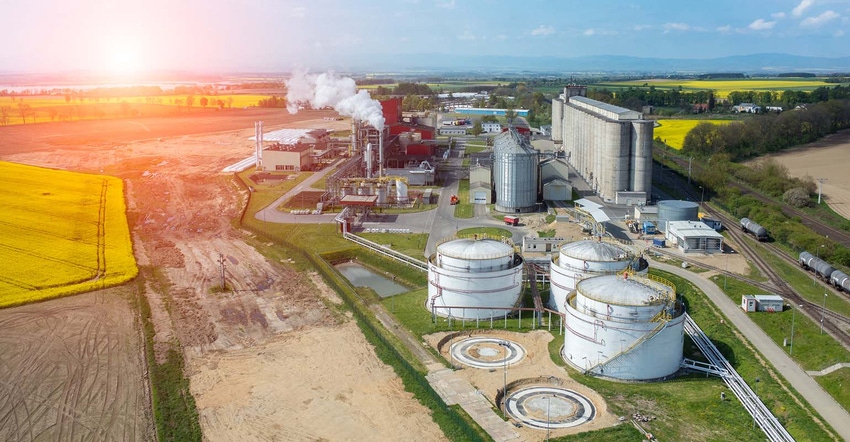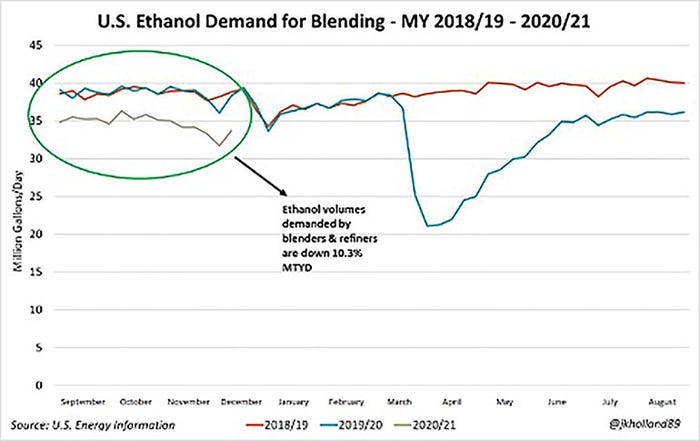
This week’s celebrated COVID-19 vaccine has given new hope to ethanol production prospects – among other sectors of the economy. But like the rest of the economy, the ethanol industry will be reliant on availability and public acceptance of the vaccine before a full recovery can occur.
Let’s break it down.
October 2020 corn consumption for ethanol rose to 432.7 million bushels – the highest monthly usage rate since February 2020. The last seven weeks of national ethanol production data released by the U.S. Energy Information Agency features the highest levels of ethanol output since the pandemic’s onset.
But the latest uncontrolled virus surge could dampen the outlook on ethanol demand in the short run. Marketing year-to-date ethanol production remains nearly 7% lower than the same period a year ago.
Weekly fuel demand had dropped 13% between early November and early December 2020 as lockdown restrictions were reenacted to combat the virus’ spread.
Yesterday’s updated production figures reflected slowing demand by refiners for ethanol as weekly national ethanol output dropped 3.4% to 40.2 million gallons/day for the week ending December 11. Ethanol stocks surged to 961.8 million gallons for the reporting time period, swelling to their highest levels since May on reduced blending demand from refiners.
But as the country adjusted to renewed restrictions to curb virus transmission and holiday shipping traffic increased, there were some signs of hope for the ethanol industry. For the first time in five weeks, yesterday’s EIA report showed fuel demand inching back up from last week’s seven-month low. Weekly gasoline demand rose nearly 5% to 335.0 million gallons/day – still low, but more optimistic than the week prior.
Rising ethanol blending rates eased as refiner demand showed signs of recovery last week. Prior to the week ending December 11, ethanol demanded by refiners fell to the lowest level since May – 31.7 million gallons/day – as rates flirted in the 13% range, which was the fifth highest weekly ethanol blending rate on record.
Ethanol blending rates surpassed the 13% benchmark in March and April as ethanol output contractions lagged behind disintegrating fuel demand. The rising blending rates of the last few weeks echoed back to those dark days last spring.
But with reduced stock levels, tightened production discipline, and less severe restrictions, any potential ethanol downturn in the weeks to come will not likely be as drastic as in the spring. Basis levels at Midwestern ethanol plants largely continue to strengthen in the post-harvest season, suggesting that any looming production slowdowns will be minor at best and temporary at worst.
Expect a turbulent winter for ethanol. As challenges remain with virus transmission and vaccine availability and disbursal, it’s likely that consumers’ willingness to travel will erratically teeter between conflicting pandemic fears and fatigue. Recovering corn export demand in late January could offset some of ethanol’s woes, though corn price stability for the ethanol sector will likely not return until warmer weather arrives.

About the Author(s)
You May Also Like






